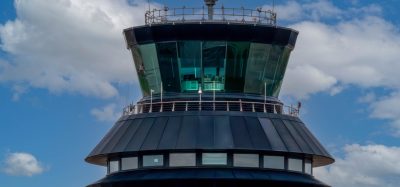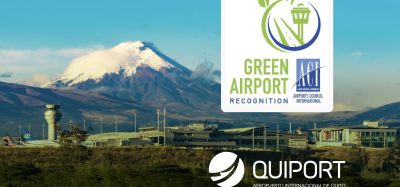Better together: Airports in the era of integrated airspace management
Posted: 13 April 2015 | David Gamper | No comments yet
Airports are complex places—there are many constraints, some landside and some airside, and all airports need efficient access to airspace. This is especially important at large and complex airports, which typically become constrained by available flightpaths for arrivals and departures as they expand. Smaller airports can also benefit from airspace reform, including new approach and departure routes. David Gamper, Director of Safety and Technical Affairs at ACI World shows where improvements can be made.


Efficient airspace design
Air navigation service providers (ANSPs), airport operators and airspace users share common goals by collaborating in a shared environment of airspace and airport networks. This should augment the efficiency and capacity of an air traffic management (ATM) system, both in the air and on the ground, so that each flight meets its user’s desired profile in a predictable and efficient manner. This principle is covered in the fourth edition of ICAO’s Global Air Navigation Plan (GANP), published in 2013, which is designed to guide progress by leveraging existing technologies and anticipating future developments based on agreed operational objectives (Aviation System Block Upgrades, or ASBUs) established in concert with state and industry stakeholders.
The time frames associated with the blocks from one to three identify the target dates for availability of the operational improvements associated with new technologies and procedures. Furthermore, the blocks, modules and performance improvement areas are designed to serve as a planning tool to help states implement airspace performance improvement in a globally harmonised and consistent manner. The block upgrades and modules allow for a flexible approach to implementing improvements based on operational requirements in each ICAO state’s airspace.
Efficient use of airspace is especially important at larger and more complex, multi-runway airports, which as they grow become constrained by existing flightpaths for arrival and departures. New development around the airport may increase sensitivity to noise exposure and also lead to obstacles that constrain aircraft tracks. Neighbouring airports may also constrain the available airspace, and lastly, terrain may also be a major constraint for some airports.
ACI supports the approach set out in the ICAO GANP, made up of ASBUs improving system capabilities in the fields defined, with a level of sophistication that increases in five year steps.
New and technical possibilities for procedures
For the many airports that do not have precision approaches, or do not have them for all runways, we support the creation of new precision Performance-Based Navigation (PBN) approaches or near-precision Approach Procedure with Vertical guidance (APV) approaches, using satellite navigation and the systems that are onboard most modern aircraft. These new routes can increase capacity and safety, and can be automated, including complex turns and curved approaches. We need a willingness to think creatively about alternatives, taking into account community noise exposure (which is a major constraint for airport operators that affects their ‘permission to grow’).
As ICAO says, PBN helps the global aviation community reduce aviation congestion, conserve fuel, protect the environment, reduce the impact of aircraft noise and maintain reliable, all-weather operations, even at the most challenging airports. It provides operators with greater flexibility and better operating returns while increasing the safety of regional and national airspace systems.
Another element of the ASBU approach—Continuous Descent Approaches (CDA) and Continuous Climb Operations (CCO)—can provide more efficient paths that reduce aircraft noise and fuel burn. The addition of a fourth dimension, planned time of arrival, can get aircraft to the right point in time and space so that they can fit directly into an approach sequence without holding.
Obstacles
Charting of terrain and obstacles, and creation of electronic terrain and obstacle databases, provide the benefits of quick access by airspace users to reliable data, despite being quite costly to map for the first time and keep updated. There are issues around the present Obstacle Limitation Surfaces (OLS) which have remained as defined in Annex 14 for many years, and which are restrictive in terms of aircraft operations and airfield design. For example, the location of runway holding positions at a minimum distance from runways, not to mention runway-taxiway separation and width of the runway strip. ICAO has commenced the task, which ACI fully supports, of reviewing OLS against the surfaces defined in the PANS-Operations, which are based on the operation and capability of aircraft.
Aircraft Separation
We also support the ICAO task to create a standardised means of safely reducing aircraft separations for approach and departure, based on studies of the wake turbulence that the leading aircraft create and its effect on the following aircraft involved. Where possible, separations can be reduced down to minimum radar separation. The plan adopted from states leading the research is to group aircraft types into at least six categories by wake effect, with a matrix of six leading by six following categories. Eventually it may be possible to use data for the particular leading and following aircraft types for full pairwise separation.
Another important issue which has been studied is the effect of aircraft using one runway on an adjacent runway, whereby wake vortices can drift across, especially in light winds. These vortices can be detected and the information used to keep separations on arrival and departure to the minimum.
A third separation issue is the potential for interference with the instrument landing system (ILS) signal to an aircraft on final approach by another aircraft that has landed or is taxiing. ICAO recommends that studies are done at each airport to determine these effects, as they are highly dependent on the type of ILS, any ILS reflections from surrounding buildings and other factors.
Airport Collaborative Decision Making
There are many players in managing traffic at airports, and often we speak different languages resulting from our different imperatives and daily operational activities. As we strive to work more closely together, we need better tools. One very promising tool is Airport Collaborative Decision Making (A-CDM). ACI is joining with ICAO, CANSO and IATA to promote broader implementation of A-CDM, which can reduce taxi times, optimise airport throughput, increase capacity and operational efficiency, save fuel and alleviate noise. It consists of sharing information among the various parties whose operations affect the movement of planes, passengers, baggage and ground vehicles.
Traditionally, air traffic control, airline dispatch, ground services and airports have worked in silos. Air traffic delivers airplanes in whatever order and may or may not advise the airline or the airport of problems or changes. The airline may know the status of the arrival or departure of its airplane but may or may not tell the airport. This is especially noticeable during periods of irregular operations—either of a particular aircraft, airline or the airport as a whole. Passengers miss their connections, retail and food shops are not coordinated with passenger flows and airport terminals and access routes become congested.
When information is shared, each party can adjust its operation to the actual arrival and departure situation, can reduce the extent of missed connections and can advise passengers and ground transportation providers. Implementation is well underway in Europe with significant input from Eurocontrol and ACI-Europe. Outside Europe, it is mainly a local or national approach, and we want to ensure that standard milestones are used for A-CDM to maximise interoperability. In the US, the emphasis is on so-called surface management and on getting aircraft efficiently between runways and parking stands, which is an important part of a broader A-CDM concept. A-CDM is addressed in the GANP under the performance improvement area of ‘Airport operations’.
A-CDM is a stepping-stone to bring airport operations to the next level – from working in isolation to working in a network and achieving both punctuality and predictability improvements. By way of example, many ACI members run an apron control tower, and they assign parking stands and optimise the pattern of use of aircraft stands over the day, using scheduled and ‘on the day’ estimated arrival and departure times, airline preferences for stands and so on. But this is still sub-optimal without knowledge of what is happening in the air and at origin and destination airports—particularly predicted ETAs for all arrivals, which should have as long a lead time as possible.
ACI and other stakeholders aim to facilitate the global promotion and rollout of CDM programs in an effort to improve air traffic management through increased information exchange and data sharing among all relevant aviation community stakeholders. Improved information sharing among all stakeholders enables optimised use of local capacity, and informed decisions to be made under rapidly changing operating conditions—especially during deviations from normal operations. The use of available resources can be constantly optimised, thus improving predictability, capacity, performance resilience and efficiency.
A-CDM enables all stakeholders to monitor network demand, capacity and constraints to make informed decisions to best meet their specific needs, enhancing safety, optimising resource usage and improving service quality. The chief beneficiaries of this initiative during normal operations are the airlines, who can achieve significant savings in fuel, staff time and asset utilisation (especially aircraft).
Airports that are operating close to maximum capacity will benefit from increased resiliency and punctuality, as well as improved quality of service. Airport operators and air navigation service providers can provide a more seamless service and reduce their impact on the environment by reducing holding, taxi and turnaround delays.
During irregular operations, all partners derive large benefits from a quicker return to normal operations, using rapid and established communications channels, which are particularly needed in such circumstances.
A-CDM implementation can support an integrated airport operations plan by providing an interface between the airport terminal (including landside passenger, baggage and cargo processes) and air traffic management systems (including the arrival, departure and surface movement management systems).
ACI and CANSO will endeavour to develop a joint best practices guide to CDM implementation, taking into account existing documentation as appropriate. To facilitate interoperability, the use of standard definitions, protocols and procedures is foreseen. There is a need for a practical guide to A-CDM implementation, and that is being written by a group of states and international organisations including ACI, to be published by ICAO.
The revolution in airports: Towers and approach control
In some countries, airport operators have newly been able either to contract for ATC tower services or carry out this function themselves—whereas other airport operators have done this for a long time. In Europe, the new aerodrome regulation of EU (139/2014), under ‘ADR.OR.C.005 Aerodrome operator responsibilities’ reads:
(b) The aerodrome operator shall ensure directly, or coordinate through arrangements as required with the accountable entities providing the following services:
(1) the provision of air navigation services appropriate to the level of traffic and the operating conditions at the aerodrome; and
(2) the design and maintenance of the flight procedures, in accordance with the applicable requirements.
This gives scope for greater influence by airport operators over airspace management in the vicinity of the airport.
Furthermore in Europe since the Single European Sky regulation, ANSPs of other states may also be contracted, for example, the German ANSP has been awarded the contract to operate the tower of a large aerodrome in the UK, the Austrian ANSP is operating at German aerodromes, and so on.
It has become clear that aerodrome operators are responsible for and the owners of their procedures, directly responsible for developing instrument flight procedures. For many small- and medium-sized aerodromes, this represents a considerable opportunity to optimise their facilities. New precision or near-precision approach procedures should become easier to design, and the mystique surrounding the technical difficulty of writing them should be reduced. As already stated, larger airports can benefit through more efficient flight paths.
In conclusion, airport operators have a major interest in the efficient use of airspace and integration with airport operations, and are becoming aware of all the new opportunities available to them, to the benefit of all users.
Biography
David Gamper is Director, Safety and Technical at Airports Council International’s world office in Montreal, Canada, where he is responsible for policy and best practice guidance on aerodrome safety, operations and efficiency, as well as ATM issues. He is secretary of the ACI World Safety and Technical Standing Committee and represents ACI with ICAO and other international organisations, advocating airport operators’ interests and advancing ACI policy. He has been an observer on ICAO’s Air Navigation Commission since 2011 and a member of the ICAO Aerodromes Panel since its inception in 2004. He has worked for ACI since 1992, and holds a degree in Engineering Science from the University of Cambridge, UK.
The International Airport Summit is open for registration!
Date: 19 – 20 November 2025
Location: JW Marriott Hotel Berlin
At our flagship event of the year, we will dive into the future of airport operations, with expert-led sessions on passenger experience, innovative smart technologies, baggage handling, airside operations, data, security, and sustainability.
This is where global airport leaders come together to share insights, challenges, and real-world solutions.
Limited complimentary passes are available for eligible professionals – first come, first served!


















